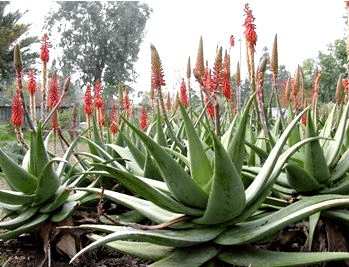CYTOTOXIC ACTIVITIES IN VITRO OF FLOWER EXTRACTS OF THREE SPECIES OF ALOE GROWING IN YEMEN:ALOE RUBROVIOLACEAE, ALOE VERA AND ALOE SABAEA, AGAINST ELEVEN TYPES OF CANCER CELL LINES
Keywords:
Aloe species, cytotoxic activities, flower extracts, in vitro, YemenAbstract
Background and aims: Natural products, in particular plant extracts, have opened up great chance in the area of drug progress owing to their chemical variety. The Aloe genus has long been known to be used for medicinal uses in countless parts of the world. This study was planned to inspect the phytochemicals and anti-cancer capabilities of Aloe rubroviolaceae, Aloe vera and Aloe sabaea flowers.
Materials and Methods: Three types of ethanolic extracts of plants traditionally used in Yemen to treat a variety of diseases have been tested in vitro for their potential anticancer activity on different human cancer cell lines. The cytotoxic activity of the ethanolic extracts of tested plants was determined using eleven strains of human cancer cells, namely: MCF-7 (breast cancer), PC-3 (prostate cancer), HEP-2(human epithelial carcinoma), MNFS-60 (myelogenous leukemia), CACO (intestinal cancer), A-549 (lung adenocarcinoma), HeLa (cervical cancer),RD (rhabdomyosarcoma), HepG2 (hepatocellular carcinoma), HCT-116 (colon cancer), and CHO-K1(Chinese hamster ovary). A colorimetric sulforhodamine B assay was applied to assess the in vitro cytotoxic activity of various extracts. Growth inhibition of 50% (IC50) for each extract was calculated from the optical density of treated and untreated cells. Doxorubicin, a broad-spectrum anticancer drug was used as a positive control.
Results: More interesting cytotoxic activity was observed for Aloe vera extract more than Aloe sabaea and Aloe rubroviolaceae, extract.
Conclusions: This study presents an initial screening for anti-proliferative activity of a variety of Aloe species flowers extracts on diverse cancer cell lines. Different extracts of Aloe species significantly inhibit the growth of various cancer cell lines in a concentration-dependent manner. Advance researches are necessary to understand the possible mechanism(s) of action of these extract on a variety of cancer cells and separation of active phyto-chemicals.

Peer Review History:
Received: 6 June 2021; Revised: 8 July; Accepted: 11 August; Available online: 15 September 2021
Academic Editor: Dr. Muhammad Zahid Iqbal , AIMST University, Malaysia, drmmziqbal@gmail.com
, AIMST University, Malaysia, drmmziqbal@gmail.com
Reviewers:
Dr. U. S. Mahadeva Rao , Universiti Sultan Zainal Abidin, Terengganu Malaysia, raousm@gmail.com
, Universiti Sultan Zainal Abidin, Terengganu Malaysia, raousm@gmail.com
Dr. Nazim Hussain , BFIT, Dehradun, Uttarakhand, India, nhussain116@gmail.com
, BFIT, Dehradun, Uttarakhand, India, nhussain116@gmail.com
Downloads

Published
How to Cite
Issue
Section

This work is licensed under a Creative Commons Attribution-NonCommercial 4.0 International License.









 .
.